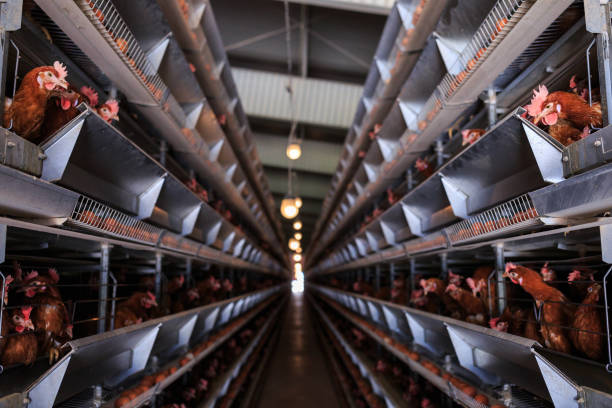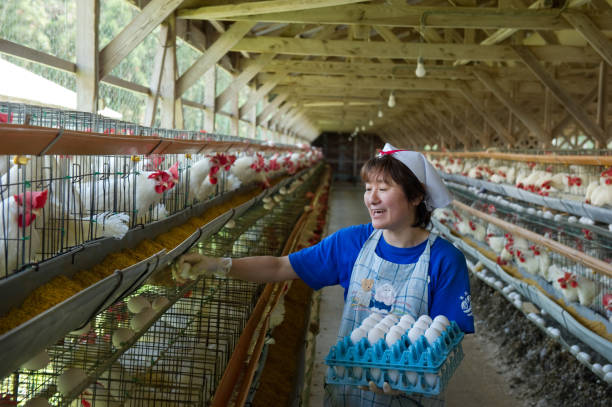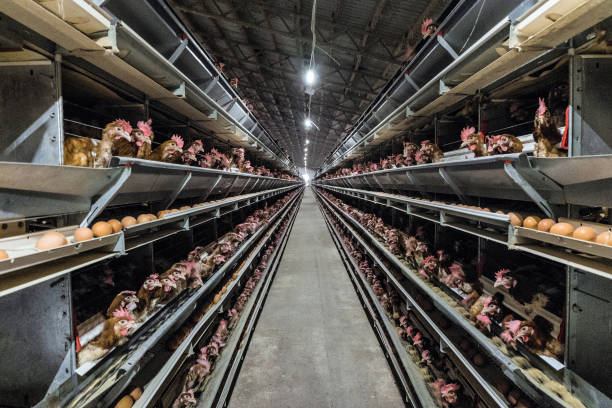
Types of Chicken Broiler Cages for Efficient Farming
Types of Chicken Broiler Cages for Efficient Farming
When it comes to modern poultry farming, efficiency and animal welfare go hand in hand. For broiler chicken producers looking to scale operations while maintaining high growth rates and healthy birds, choosing the right type of broiler cage system is absolutely essential. At Zhengzhou Livi Machinery Manufacturing Co., Ltd., we’ve spent over a decade designing and refining broiler housing solutions that maximize space, improve feed conversion ratios, and reduce labor – all while keeping bird stress low. In this article, we’ll walk you through the most common types of chicken broiler cages used in efficient farming today, explaining their benefits, ideal settings, and how they contribute to sustainable, high-yield operations.
Understanding Different Broiler Cage Systems and Their Uses

Broiler cages aren’t one-size-fits-all. The best setup depends on your farm size, climate, management style, and production goals. Let’s start with the most widely adopted model: the three-tier stacked broiler cage system. This vertical design allows farmers to house more birds in a smaller footprint, making it perfect for farms with limited land or those aiming for intensive production. Each tier is equipped with feeding troughs, automatic drinkers, and sometimes even built-in manure removal belts. Because air circulates well between levels and cleaning is simplified, disease risk drops significantly. Plus, since chicks aren’t walking in damp litter, leg problems and breast blisters – common in floor-raised broilers – become far less frequent.
Another popular option is the two-tier system, which offers many of the same benefits but at a lower overall height. This makes it easier to manage manually if automation isn’t yet within budget. Two-tier systems are especially favored by small to mid-sized farms in regions where ceiling heights or investment costs limit expansion. They still provide excellent weight gain and uniformity across flocks thanks to consistent access to food and water. Meanwhile, open-floor pens with partial caging – sometimes called hybrid systems – blend traditional floor raising with caged advantages. These often include covered resting areas or elevated platforms made from galvanized wire mesh, giving birds dry spaces off the ground while allowing natural behaviors like scratching and stretching.
Then there are mobile or portable broiler cages – an innovative choice gaining traction among free-range and organic producers. These movable units can be rotated across pasture, enabling access to fresh ground every few days. Not only does this improve feed efficiency by supplementing diet with insects and greens, but it also spreads manure naturally, reducing environmental impact. While not as high-density as fixed cages, mobile units support premium pricing due to better meat quality and ethical labeling opportunities.
How Modern Cage Design Improves Growth, Health, and Profitability
It’s not just about stacking birds higher – good broiler cage design directly influences key performance indicators like daily weight gain, feed conversion ratio (FCR), and mortality rate. Well-designed cages control microclimate factors such as airflow, temperature, and humidity. For instance, our proprietary mesh flooring at Livi ensures droppings fall through quickly, minimizing ammonia buildup – a major cause of respiratory issues in fast-growing broilers. High ammonia levels don’t just harm health; they slow down growth and make birds more susceptible to infections.
Automatic feeding and watering systems integrated into cages play a huge role too. When every bird has equal access without competition, you see fewer runts and much tighter flock uniformity at market age. Water nipple lines prevent spillage, cutting down on wet litter and related footpad dermatitis. Some advanced setups even use smart sensors to monitor water intake in real time – sudden drops can signal illness before visible symptoms appear, allowing early intervention.
Durability matters just as much as function. All our cages are constructed from hot-dipped galvanized steel, resisting rust even in humid environments. That means they last over 15 years with minimal maintenance, protecting your long-term ROI. And let’s talk labor: a single worker can manage thousands more broilers in cages compared to deep-litter barns because tasks like vaccination, weighing, and cleaning take far less time. With rising labor costs worldwide, this operational advantage is becoming non-negotiable for competitive farms.
Customization: Matching the System to Your Operation
No two farms are alike, and neither should their equipment be. That’s why flexibility in design is a hallmark of intelligent broiler housing. At Livi, we help customers choose based on chick age, target weight, grow-out period, and local regulations. For example, younger broilers need more floor space per bird, so denser configurations usually kick in after the first three weeks. We offer adjustable partitions that let farmers expand or contract space as needed during the growing cycle.

Climate-specific modifications are another game-changer. In hotter regions, we recommend wider cage spacing and shade roofs to avoid heat stress, while colder areas may benefit from windbreak walls or insulated sections during winter batches. Ventilation integration – whether natural ridge vents or powered tunnel systems – is carefully planned to maintain optimal air exchange without chilling chicks.
We also customize accessories: add-ons like egg collection trays (for parent stock nurseries), warming lamps, foot guards to prevent injury, or even CCTV monitoring for larger installations. The goal is always simple: give you scalable, future-ready infrastructure that grows with your business.
Thinking of upgrading your current setup or starting fresh? Now is the perfect time to explore how the right broiler cage system can transform your farm’s output. Whether you’re managing 500 birds or planning a 50,000-bird facility, our team at Livi has the experience and know-how to guide you step by step – from layout planning and site assessment to installation and training. Ready to see what’s possible? Leave us your contact details below, and we’ll send over a free consultation package including sample designs, pricing options, and customer videos showing real-world results.
Frequently Asked Questions
What is the average lifespan of a broiler cage?
Most well-made broiler cages last between 12 to 18 years, especially when made from hot-dip galvanized steel. Ours are built to withstand daily wear and harsh climates, requiring only basic cleaning and occasional part replacements.
Are broiler cages humane for chickens?
Yes, especially when properly designed. Modern cages prioritize comfort with anti-slip floors, adequate space, proper ventilation, and easy access to food and water. Birds in clean cages often have fewer injuries and diseases than those on dirty litter floors.
Can I use broiler cages for other types of poultry?
While they’re tailored for meat chickens, similar cage systems can be adapted for quail, ducks, or turkey poults with minor adjustments to bar spacing and height.
Do broiler cages require electricity?
Full automation (like feeding, watering, or manure belts) does require power, but manual versions work fine without it. Many farmers start basic and upgrade components later.

How do broiler cages affect feed efficiency?
Birds waste less energy moving around or fighting for access, leading to improved FCR – often under 1.6:1 in optimized systems. Cleaner environments also mean healthier digestion and absorption.
Is cleaning hard in cage systems?
Not at all. Most models include removable tray liners or automated scrapers that make cleanup fast and simple. Many users report cutting cleaning time by up to 70% compared to floor pens.
Can I buy pre-assembled cages or do I assemble them myself?
We offer both options. Pre-assembled units are great for quick deployment, while flat-packed kits save shipping costs and are easy to build onsite with minimal tools.
How much space does each broiler need in a cage?
Typically 0.7 to 1 square foot per bird depending on breed and age. We help calculate exact density based on your target market weight and grow-out duration.
Do cages work for free-range certification?
Hybrid models with outdoor access or fully mobile cages can meet free-range standards if managed according to local guidelines. Check your regional requirements, but yes – caging and ethical labels aren’t mutually exclusive.
What support do you offer after purchase?
From technical drawings and site advice to installation guides and troubleshooting, our support team stays with you throughout the process. We also provide spare parts and upgrade recommendations down the line.
